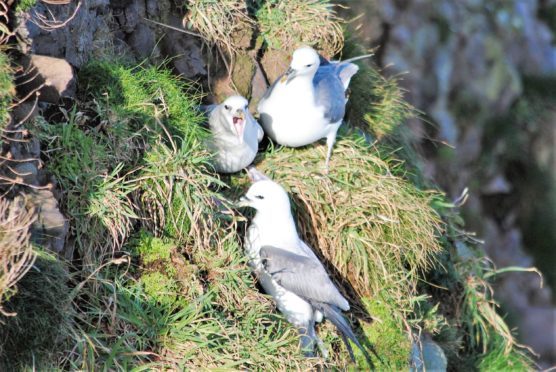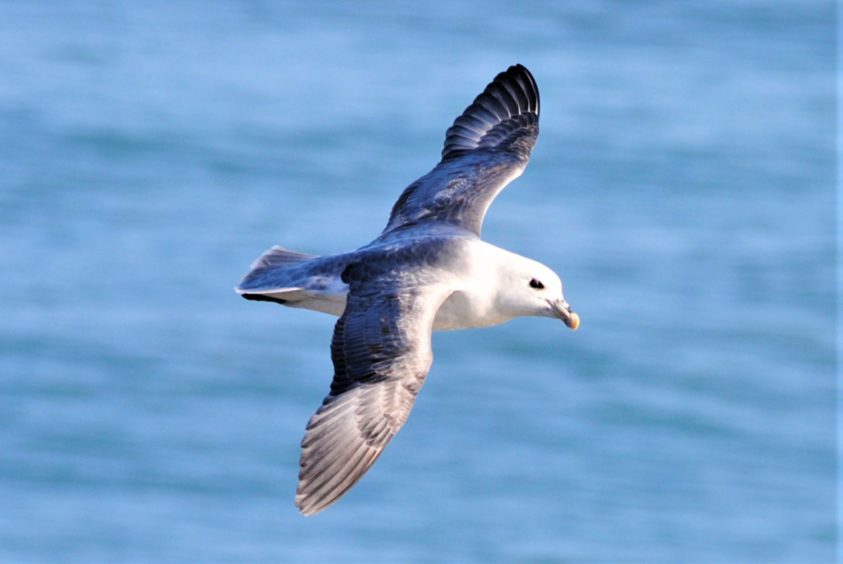Two’s company and three’s a crowd – which was certainly the case here on the high cliffs at Fowlsheugh south of Stonehaven where the fulmars bickered as they sought to reclaim their nesting ledges.
Two fulmars had settled on a grassy ledge, cooing and preening like happy lovebirds. But another fulmar, presumably a male, was having none of such nonsense and swooped down to land right next to the pair. A squabble ensued, with beaks open and much cackling.
The vocal duel continued for a while longer, but the interloper soon got the message and took to the air again. I’m not sure why he even bothered, as fulmars are faithful birds and mate for life, and this intruder had little chance of claiming the female for himself, especially since her partner was sitting right beside her.
It was good to see the fulmars back on their nesting cliffs and there were several birds riding the cliff updrafts on wide-stretched wings. Many fulmars return early in the season from their oceanic wanderings to secure the best nesting ledges, and I suspect those birds that are the first back are the most successful when it comes to breeding.
Although the fulmar looks a bit like a gull, it is in fact a petrel and related to the albatross, and like albatrosses, they love to wheel in the air currents with hardly a beat of the wings.
It will be several more weeks yet before these fulmars lay their eggs. I was hoping to see guillemots too, as I had heard they had been seen on the sea cliffs in recent weeks. Unfortunately, none were about, and it seems that at this time of the year they are rather fickle, turning up on the cliffs on some days and being absent on others.
I scanned offshore with my binoculars in the hope of spotting bottlenose dolphins, but the calm sea was strangely quiet. However, I had time on my hands, so I returned to my car and drove up to Aberdeen, parking near the fortified ancient monument of the Torry Battery that overlooks the entrance to the bustling harbour.
This is one of the most reliable spots I know on this part of the coast for spotting dolphins, and sure enough, only seconds after my arrival I spotted one flinging itself sideways from the foaming-white wake of an oil supply vessel as it approached the harbour. It was a spectacular leap and a remarkable piece of behaviour because this dolphin was doing it for fun.
I like the idea of animals having enjoyment, and as I cast my mind back to the fulmars I had seen a short while earlier, it occurred to me that those swirling about on the air currents above the cliffs were probably also doing so for a bit of a jolly. I mean, if you can fly so effortlessly, why not have some fun with it?
info
Fulmars feed on a variety of oceanic foods, including zooplankton. Fowlsheugh is a RSPB reserve and the spectacular cliffs are packed with more than 130,000 breeding seabirds during spring and summer.











